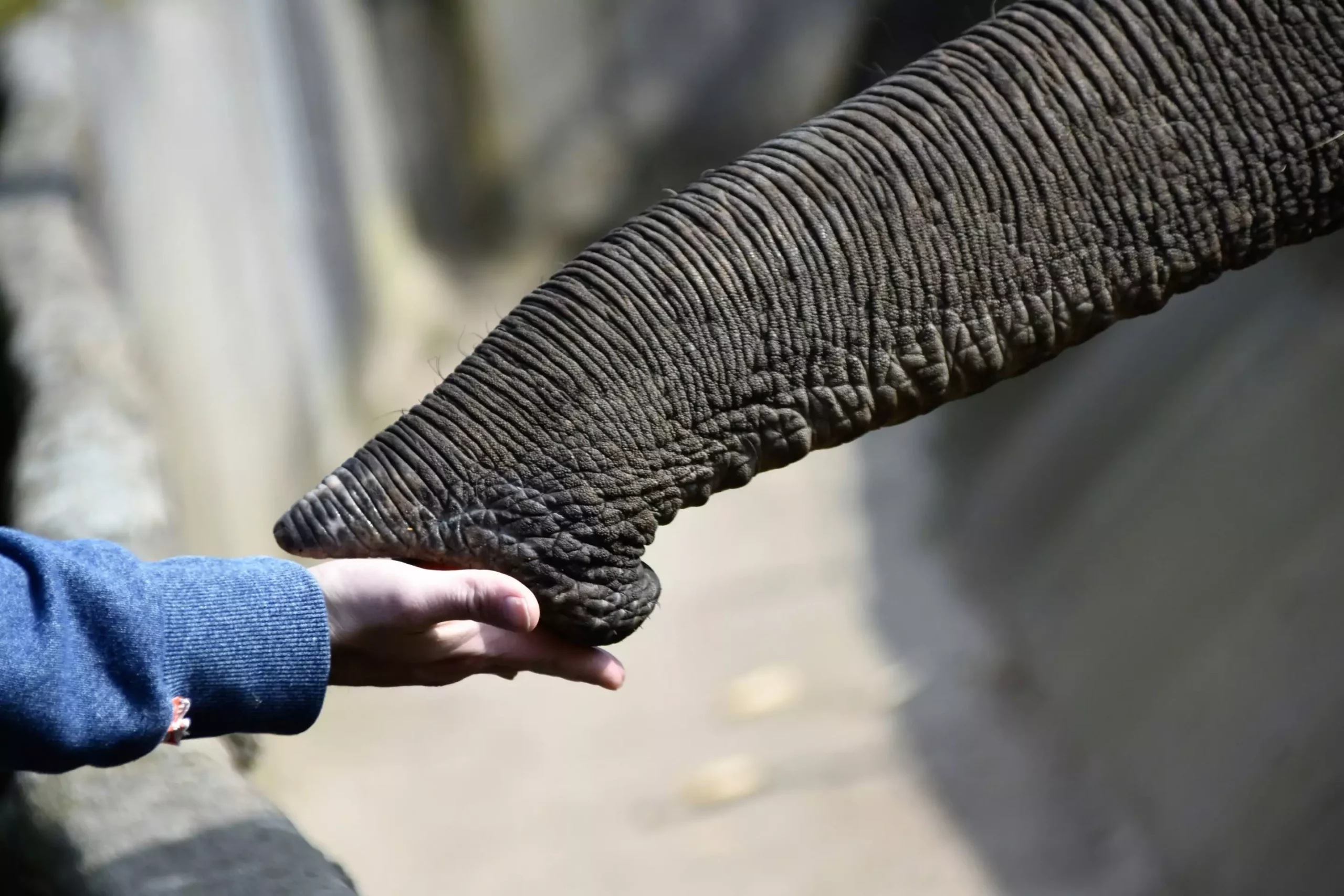The trunk of an elephant is an incredible and multifunctional appendage. It is utilized for a variety of tasks including eating, drinking, communicating, exploring, social behavior, and even making and using tools. The trunk is composed of six muscle groups, giving it both strength and precision. Elephants have developed various techniques to grip objects, such as suction, pinching with the two “fingers” at the tip of the trunk, and wrapping the trunk around the object.
In a recent study conducted by researcher Pauline Costes and a team of scientists, they tested the force exerted by the trunk tips of six female African savannah elephants in a zoo. The study aimed to determine the maximum pinching force generated by the tip of an elephant’s trunk. Previous research had focused on the overall force of the trunk when used to grasp objects, but this study honed in on the force exerted at the trunk tip. The tip of an elephant’s trunk consists of two finger-like protuberances, with a pointy one at the top and a more rounded one underneath.
The flexibility and dexterity of the elephant’s trunk have inspired researchers in the field of robotics for the past two decades. Bio-inspired technology aims to mimic the natural abilities of biological tissues in the design of robots. The findings of the study, which revealed a maximum pinch force of 86.4 Newton, provide valuable insight for the development of soft grippers in robotics. Soft grippers, based on the elephant’s trunk, are essential for enabling robots to grasp objects with precision and adaptability in cluttered and unpredictable environments.
The research on the pinching force of an elephant’s trunk tip has far-reaching implications across various industries. Soft robots, equipped with grippers inspired by the elephant’s trunk, can be utilized in a range of applications. In the field of medicine, robots can be used for minimally invasive surgical procedures. In industries, soft robots can handle fragile or irregularly shaped objects on production lines. Research and exploration benefit from robots capable of navigating difficult environments, while agriculture sees robots used in harvesting delicate fruits and vegetables without causing damage.
To conduct the study on elephant trunk pinching force, the researchers designed a box fitted with force sensors connected to an electronic system. The box released apples as a reward when the elephant applied enough force to cross a predefined threshold. By measuring the pinch force vertically and horizontally, the researchers were able to observe how the position of the trunk influenced the force exerted by the elephants. Setting up the equipment and training the elephants for the tests required time and effort, but the data collected provided valuable insights into the strength and precision of an elephant’s trunk.
Beyond the technological advancements and applications in robotics, the research on elephant trunk pinching force has implications for conservation efforts. Understanding the grasping techniques of elephants in different habitats can aid in conservation strategies, particularly in the face of climate change that alters elephant habitats and affects their feeding behaviors. By studying the intricacies of an elephant’s trunk, researchers can contribute to the preservation of this magnificent species.


Leave a Reply